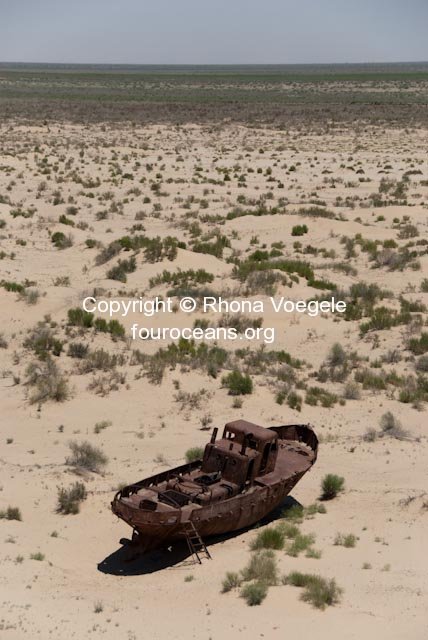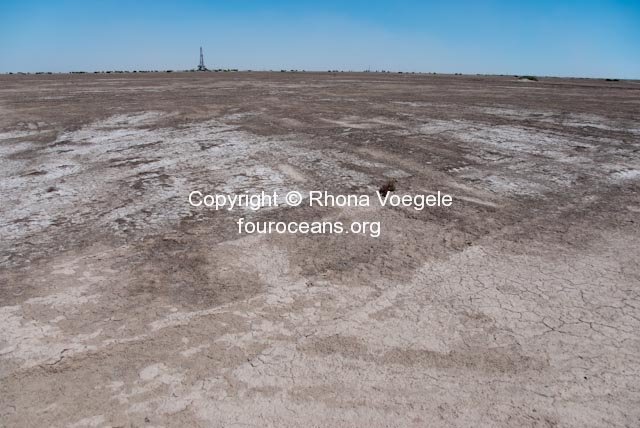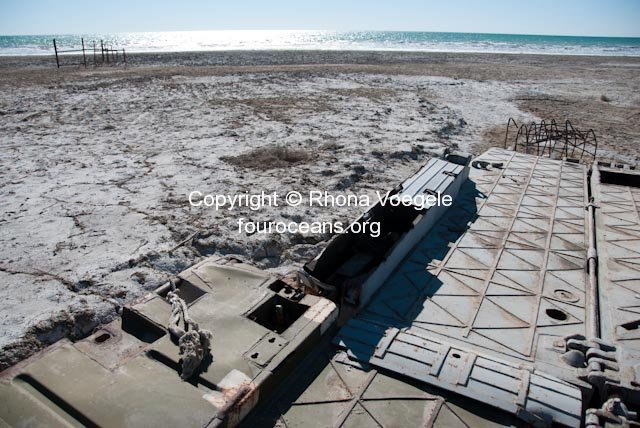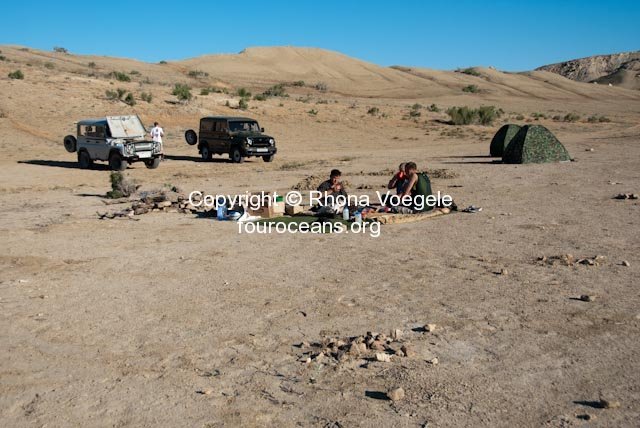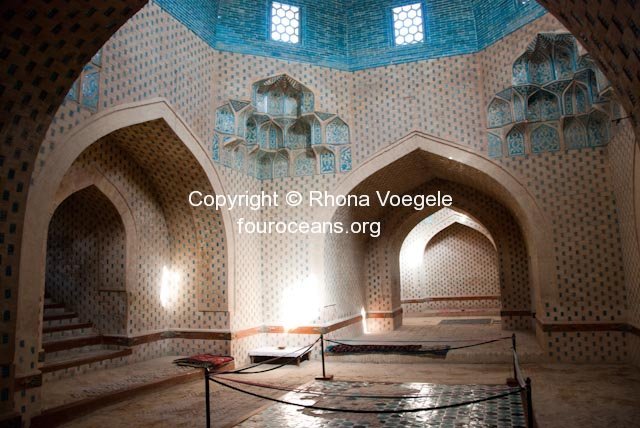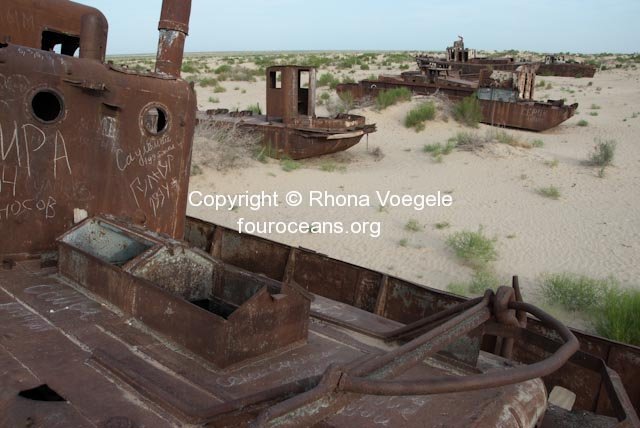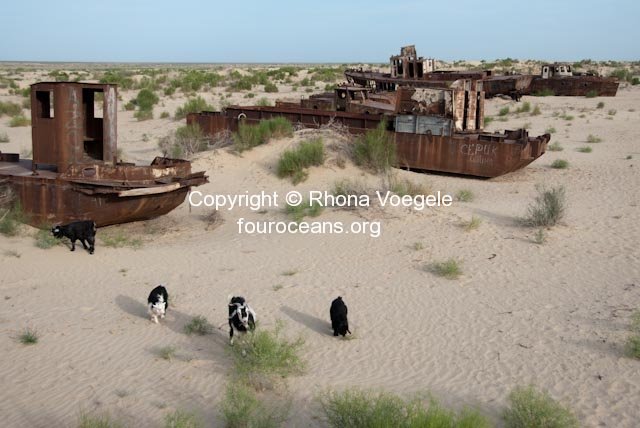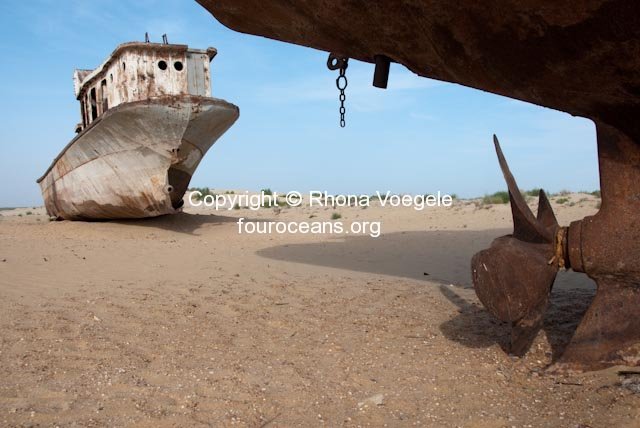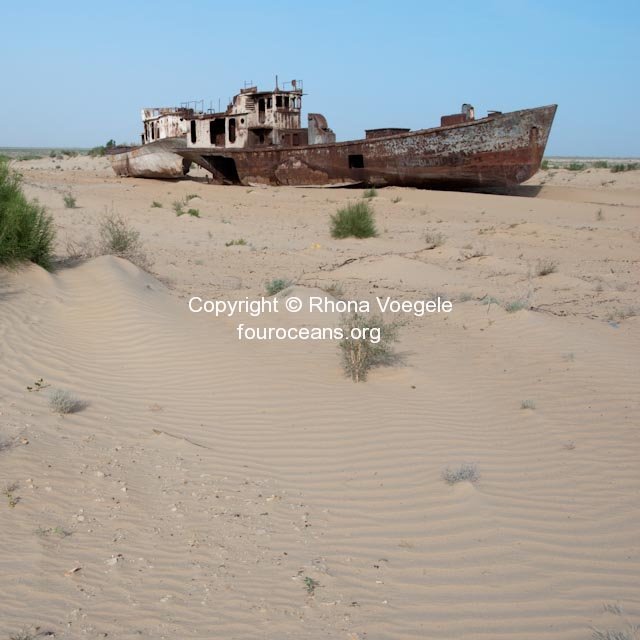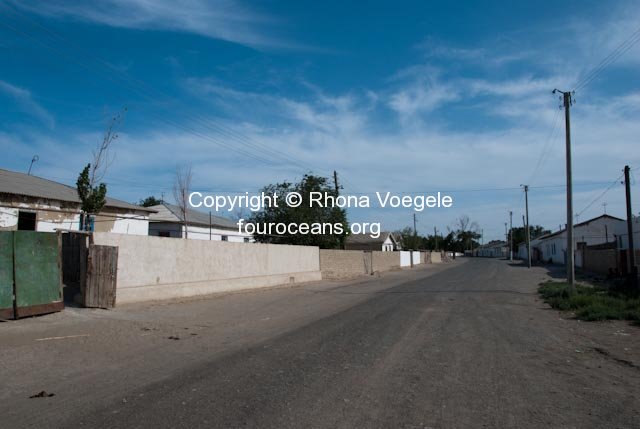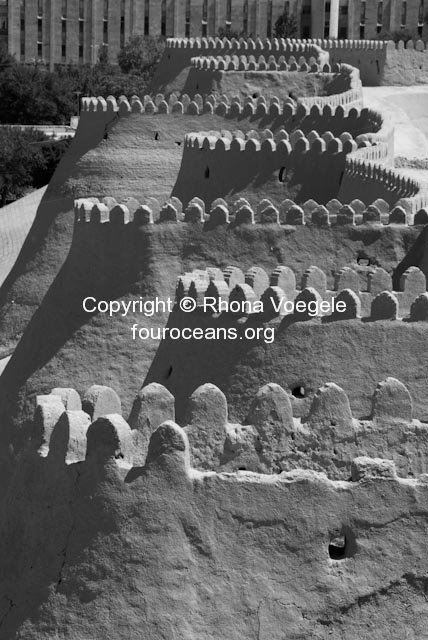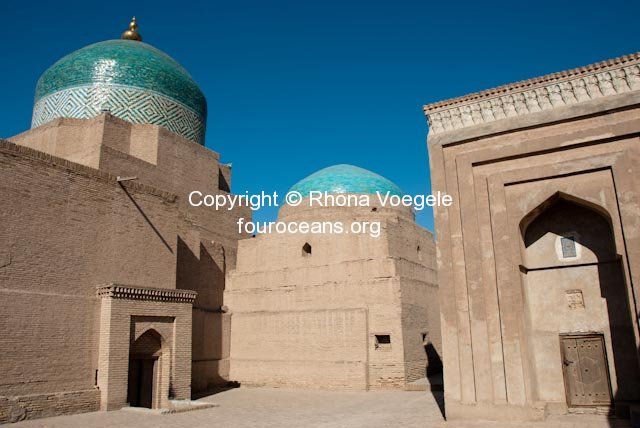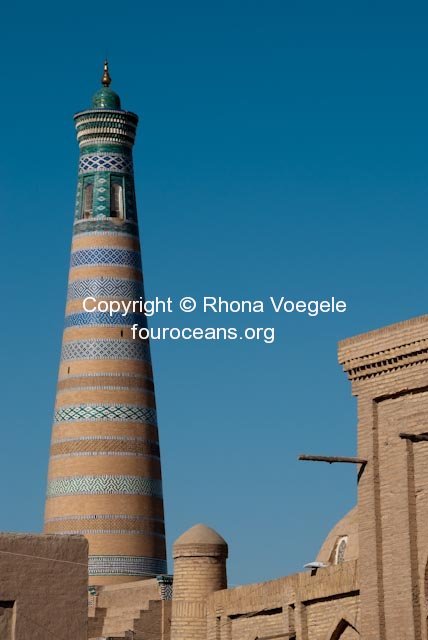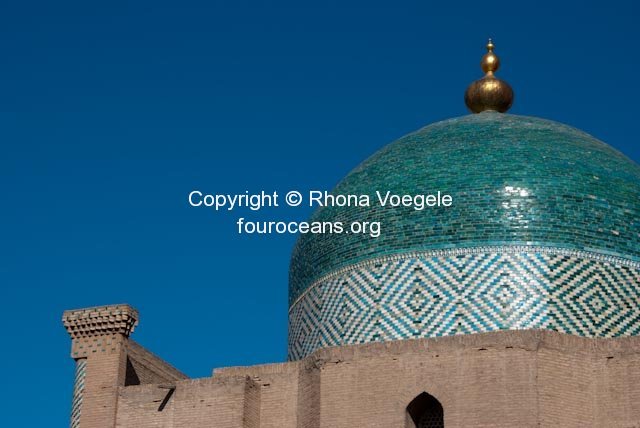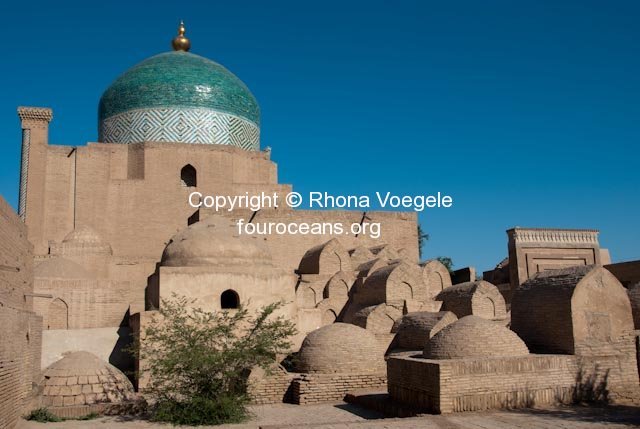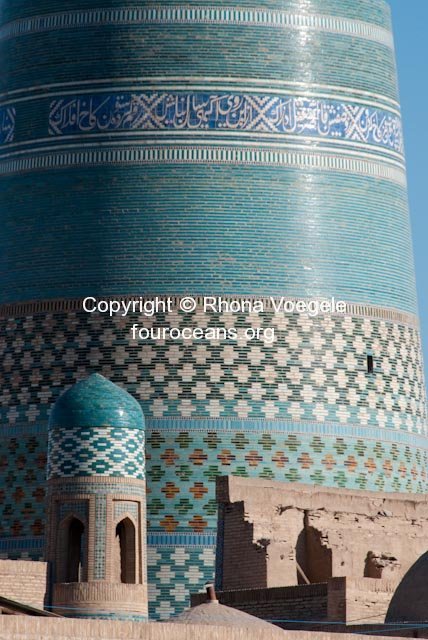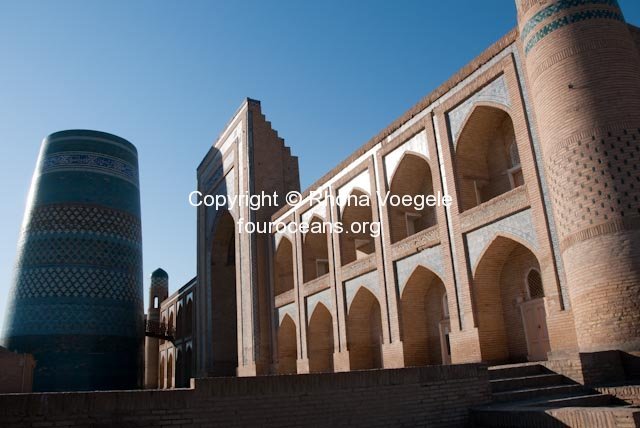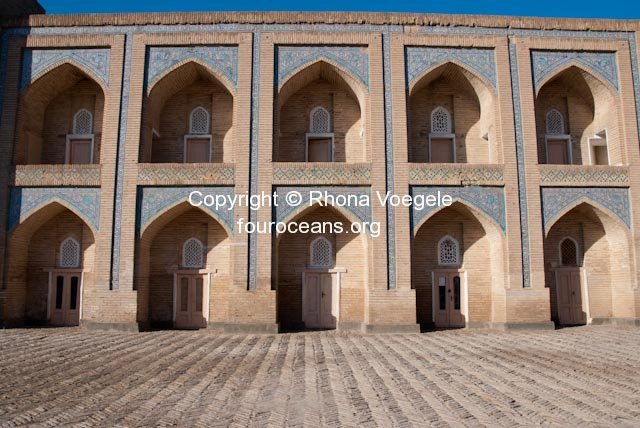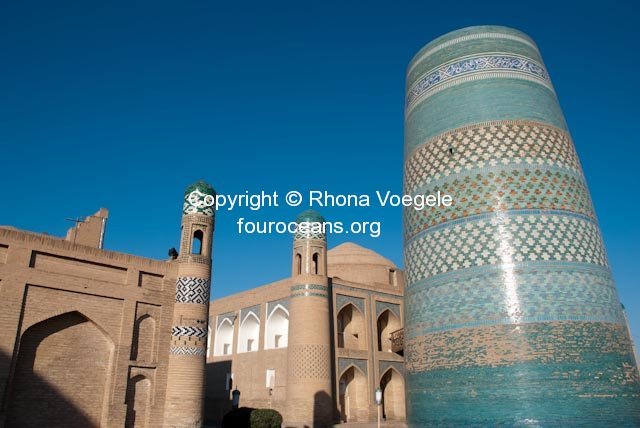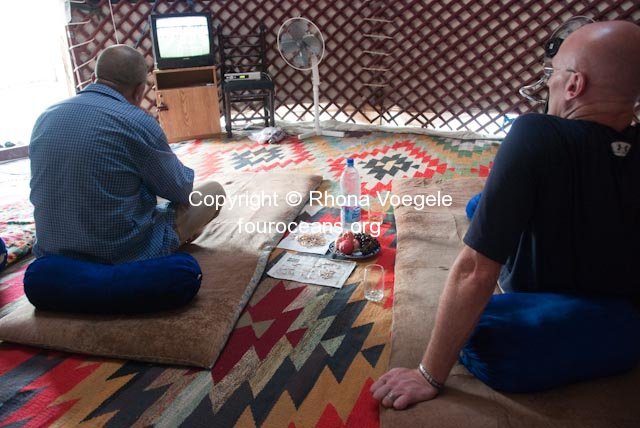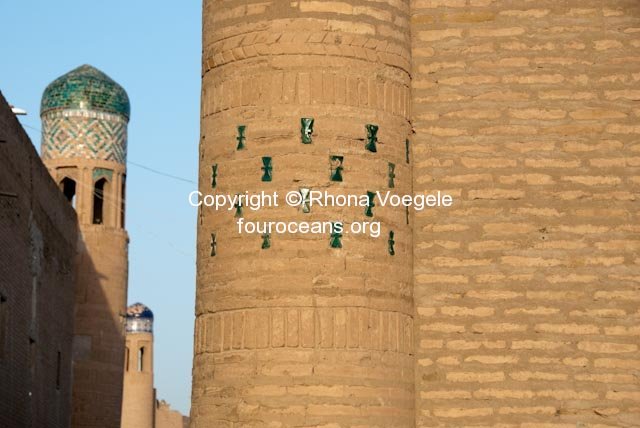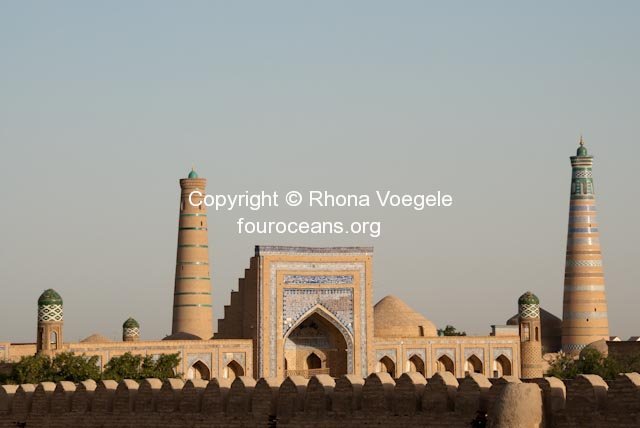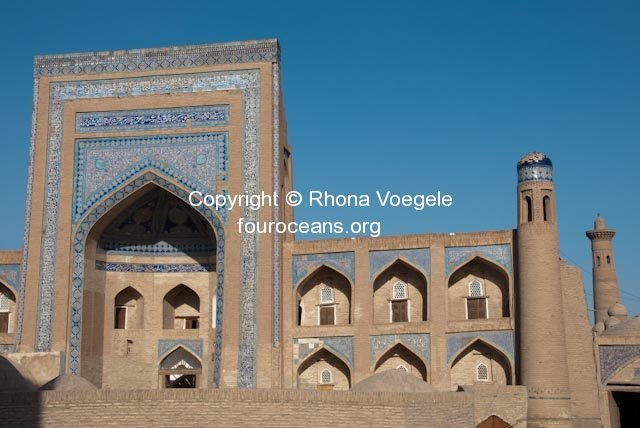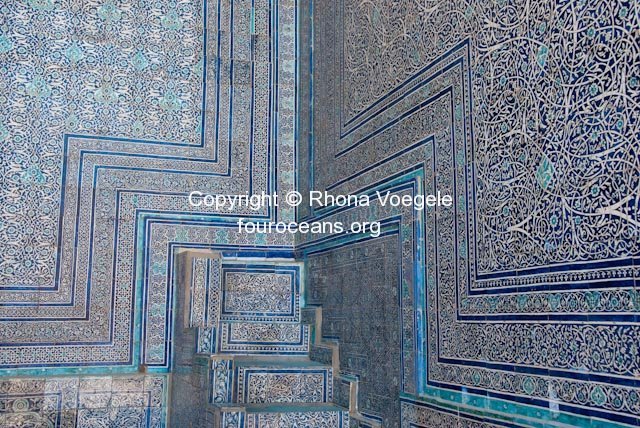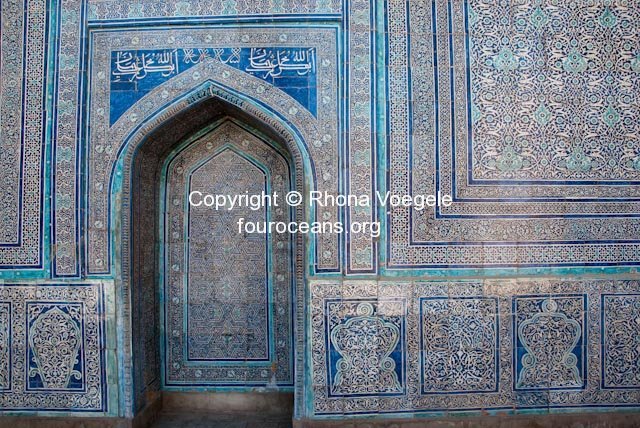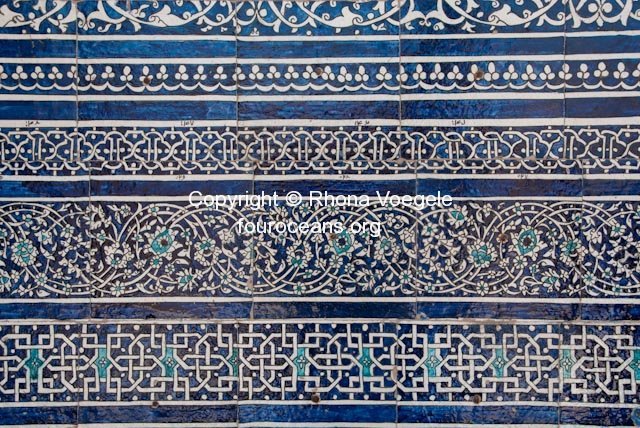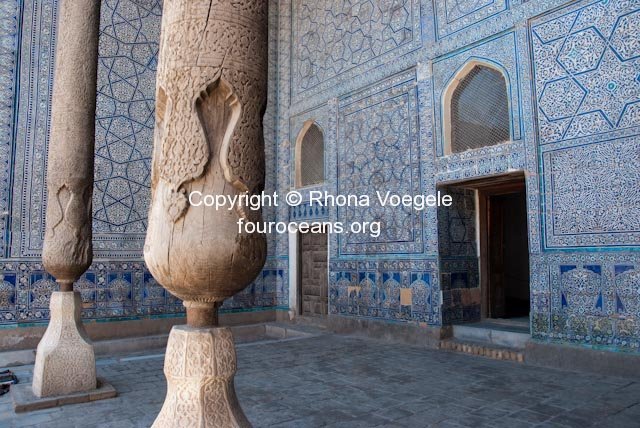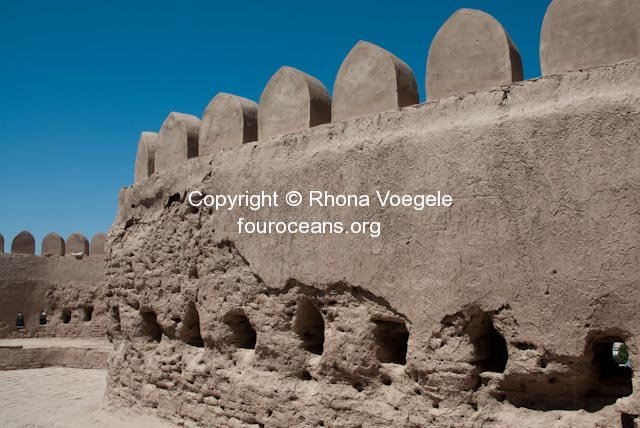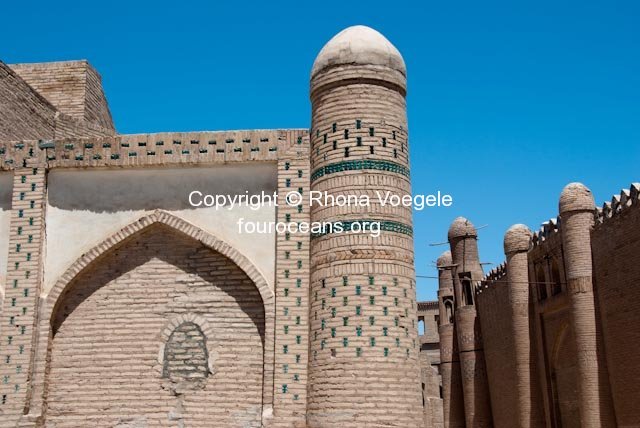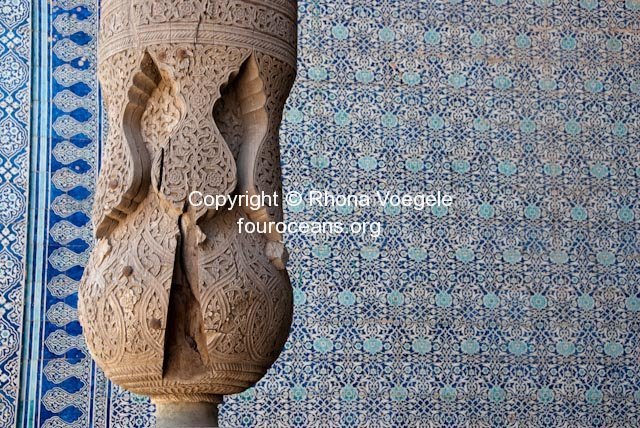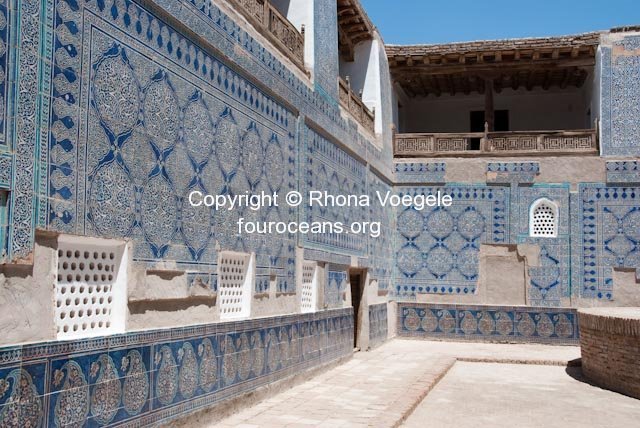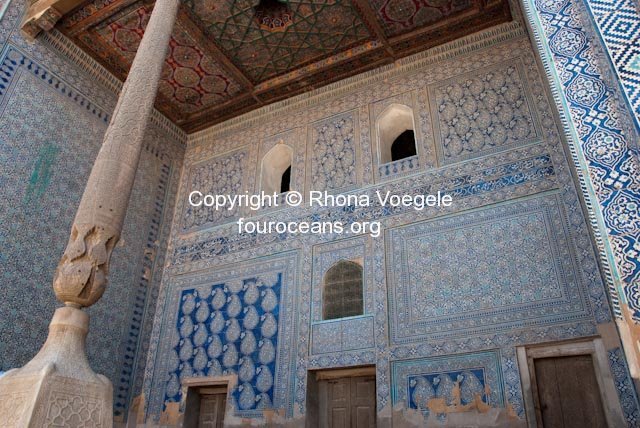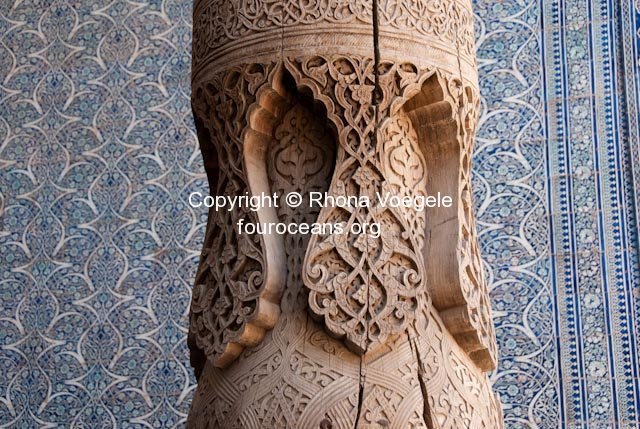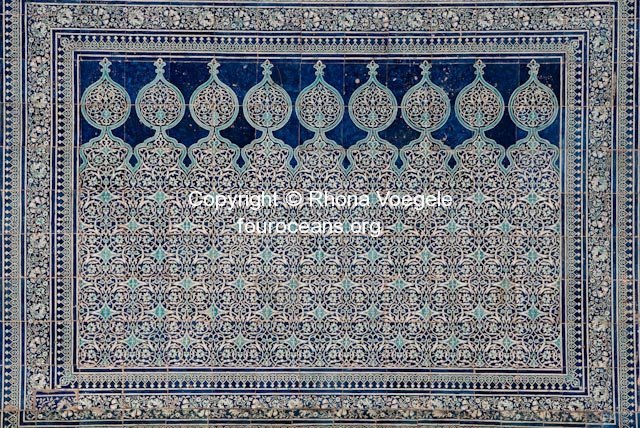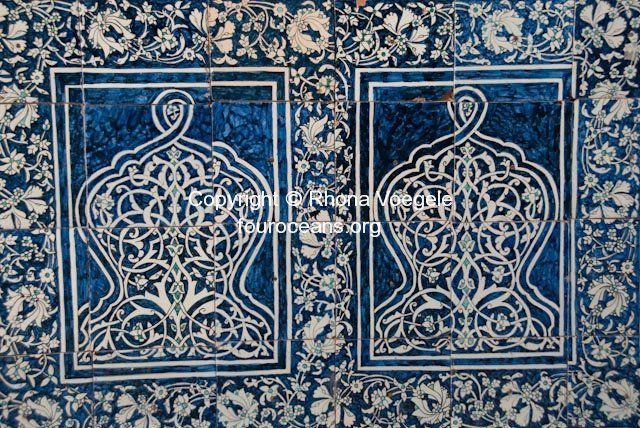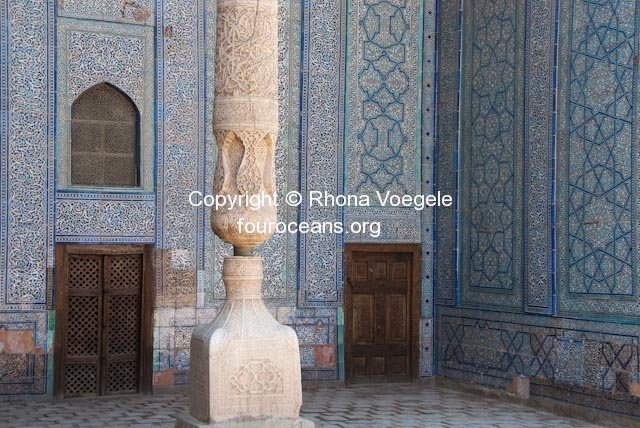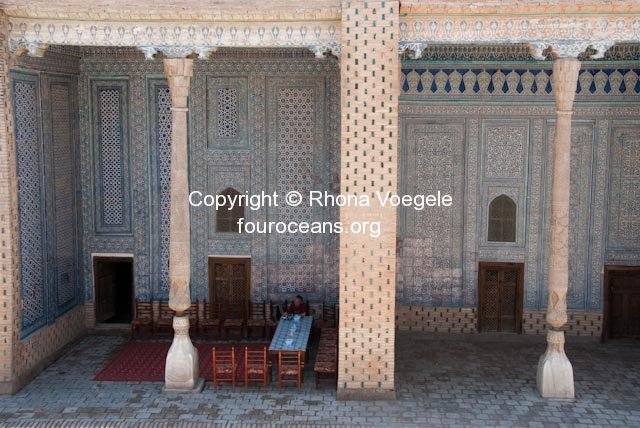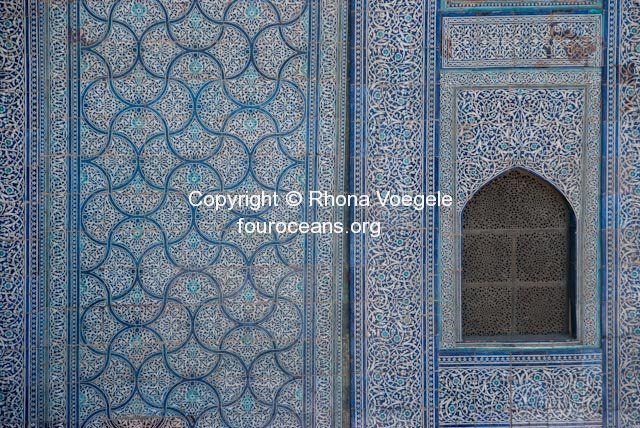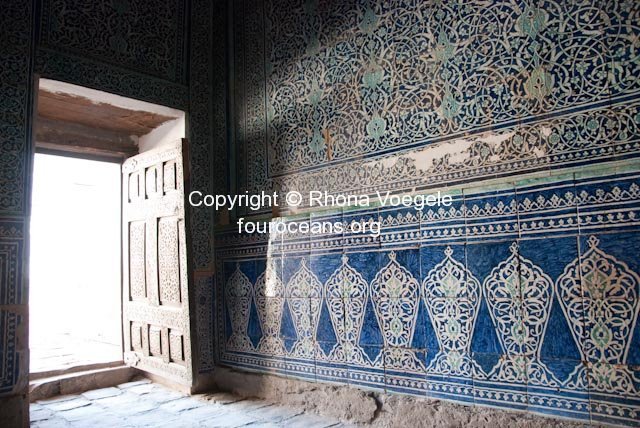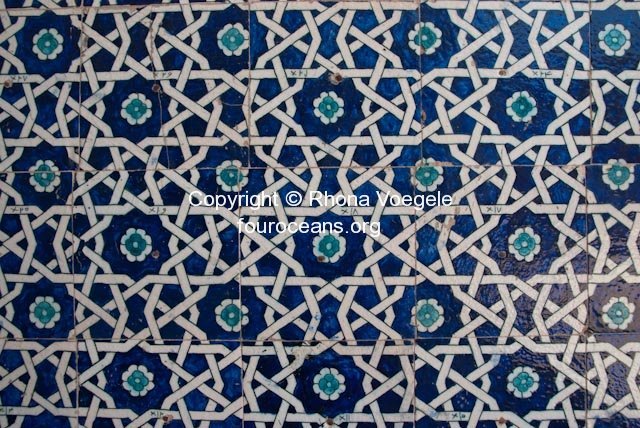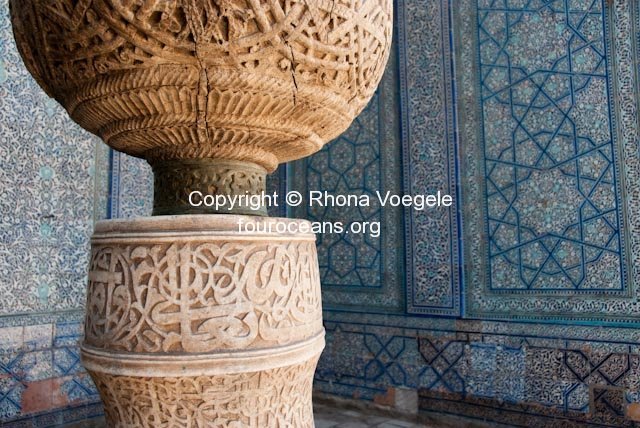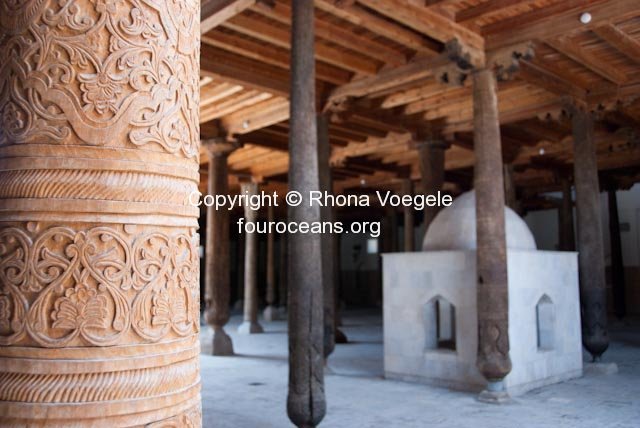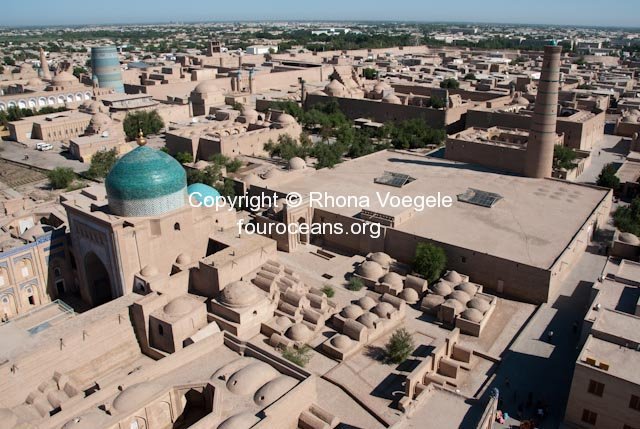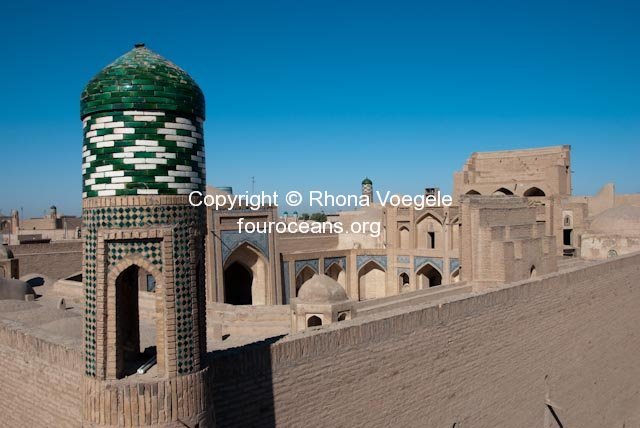–
–
From Nukus we headed north to indulge in a little disaster tourism. For all the things we read about the Aral Sea, actually seeing its remains gave us a fuller appreciation of the scale of the environmental disaster. The thing that’s most striking is how big it still is. Even after so many years of shrinking there’s still a large area of water, which made me appreciate just how massive it was to start with. Back in the early 60’s, before the water started receding, it was the world’s fourth largest lake, 400km across at its longest point and 280km at its widest. It was home to fish stocks that supported a fishing industry of 60,000 people, mainly in Moynaq (Uzbekistan) and Aralsk (Kazakhstan). Unfortunately, the Soviet planners wanted to expand agriculture in the area, and particularly production of cotton to supply the textile industry. They dug irrigation canals to tap the water of the Amu-Darya and Syr Darya rivers and by the 1980’s the flow into the Aral Sea was less than one tenth of levels in the 1950’s. But the Aral Sea had already started to dry up in the mid 1960’s. According to the Lonely Planet, water levels fell more than 16m between 1966 and 1993, though our guide told us the current water depth is 48m lower than the original.
That’s the other thing that shocked us – the water is still dropping. At the lake shore near where we camped there was a pontoon lying on the salt-encrusted shore, at least 5m from the water. Apparently it was in the water in August 2008, refuelling boats that were buzzing around looking for oil. Looking way back to the plateau we were camped on, the water would have stretched all the way to the cliffs, and in 1983 still had a depth of 12m. And yet cotton growing is still being encouraged. So much so that university students in the area are put to work picking cotton for four months of the academic year.
Read the rest of this entry »
Tags: Aral Sea, Khiva, Moynaq, Nukus
We flew in to Tashkent, Uzbekistan and were greeted by a wave of heat. At this time of year temperatures often hover around 40 degrees celcius and we’re just not used to that… yet… We’d better adjust quickly! We decided to spend the first night avoiding adjustment by hiding in our hotel room. Sad I know but we were feeling a bit wiped out and in need of a night in.
The next day we headed out to do some admin before our flight to Nukus in the west of the country. We tried unsucessfully to get some answers about our visas. In London i was told we could only stay 30 days, at the Tashkent airport they said no problem to stay 32 days. At the visa office downtown Tashkent we were once again told that we could only stay 30 days. This is kind of important to know the correct answer to but as yet we’re still not really sure. I’d hate to do something truely complicated here – like organise health insurance! Speaking of which, i’d dreamt that all my German health insurance dramas were over but i was obviously in some delerious state of hopefullness. As we speak a form is being faxed in Germany to someone’s mum (who i think is in Nigeria) to scan and email to me before the internet cafe closes in 20 min. I will then print it, sign it and tomorrow morning go in to a friend’s office to get her to fax it back to Germany. Welcome to my life…
Read the rest of this entry »
Well I’ve obviously been relaxing a little too much to update my blog. And for someone not really in travel mode I’ve still covered a fair bit of ground. Prague was great, I caught my family again briefly then flew to London to hang out with friends and sort out the Uzbek visa. While I was there I popped up to Edinburgh to catch up with someone else. And now I’m in Riga with Brett and we fly to Uzbekistan tomorrow morning.
But let’s start at the start: Prague. A beautiful city full of historic buildings but I wasn’t the only one to think so – it was swarming with other tourists. I wandered the old town during the day and hung out with my friend in the evenings when she was taking a break from school and paid work. We checked out some performances of the Prague Fringe festival and watched a couchsurfer play a gig at a little bar around the corner.
On a day trip out of the city I went to Kutna Hora, a small town an hour outside Prague. The first settlement was a monastery in 1142 and by 1260 people began to mine silver in the area. The city grew quickly in the ensuing centuries and even rivalled Prague as the most important city in Bohemia. These days it’s a pretty sleepy little town but people come to see the Sedlec Ossuary, which contains the artistically arranged bones of around 40,000 people. Back in 1278 the abbot of Sedlec monastery went to Jerusalem, brought back some holy earth and sprinkled it over the cemetery. News of this meant that Sedlec was THE place to be buried, and people from all over Central Europe were interred. Plague in the 14th century and wars in the early 15th century meant the cemetery had to be enlarged several times and in 1400 a new church was built with an area to house remains that had been dug up to make space for new burials. In 1870 a private family took ownership of the church grounds and employed someone to tidy up the bones. The results speak for themselves – chains of skulls, a family crest fashioned from bones and a chandelier that contains every single in the human body. It was interesting, but a little creepy.
Read the rest of this entry »
I spent a few days back in Amsterdam crashing at Jen and Mark’s place and exploring the city while they were off at work. The first day was spent just wandering around the canal district. Apparently the “Venice of the north” has over 100km of canals and 1,500 bridges, but I didn’t check the validity of that factoid. What is interesting though is the layout of the canals. In the old part of town, laid out in the Dutch Golden Age of the 17th century, town planning decided to build a series of semi-circular canals which linked in at both ends to the harbour. The design was practical both for defence and transport of goods (beer was specifically mentioned a couple of times).
On my first day the weather was good, but it’s been pretty awful ever since. As a result, most of the rest of my sightseeing was indoors, though Amsterdam does have some cool museums. I checked out the Van Gogh museum, the Rijksmuseum and Anne Frank house. As well as seeing some of Van Gogh’s most famous artworks, it was really cool to see the transition of his work from his first ever oil painting, through mimicking of other artists styles and finally to his trademark style of expressive blobs of brightly coloured paint. I already knew of his mental illness, ear cutting off incident and suicide at age 37, but I didn’t realise that he only started painting at a late age and did most of his best known work in the last two years. He initially worked at an art dealership but left to do religious work, and was later largely supported by his art dealer brother, Theo, who worked hard to promote Vincent’s work both during his life and after his death.
Read the rest of this entry »
Tags: Amsterdam, Anne Frank House, Munich, Rijksmuseum, Van Gogh
